Fuel Monitoring
Fuel Monitoring enables you to monitor fuel usage for each vehicle in your fleet. Utilize fleet fuel tracking to lower expenses, decrease CO2 emissions, and encourage fuel-efficient practices throughout your fleet!
Reasons to Utilize Fuel Monitoring
Safeguard Fuel Against Theft
Fleet managers have valid concerns regarding fuel theft, including incidents from within the organization. Implement fuel monitoring systems to identify irregularities and safeguard your assets, thereby minimizing the risk of fuel-related losses.
Improve Driving Culture
Combine fuel monitoring with other systems, like driver behavior analysis, to identify fuel-wasting habits and promote more responsible driving practices among drivers.
Enhance Fuel Efficiency
Enhance your fleet with immediate insights into fuel consumption trends. Detect inefficiencies and adopt strategies to optimize fuel usage, improving your business's overall efficiency.
How Hitrace supports fleets: a reliable fuel monitoring solution.
Aerial perspective
Encourage your client to track every ounce of filled or used fuel and understand how it impacts their budget, both overall and in relation to vehicles, drivers, trips, or other factors.
Real-time control
Fleet owners can easily track fuel consumption and current tank levels with just a few clicks—eliminating the need for phone calls or manual inspections.
Past records
Enable your client to enhance their budget by consistently reviewing fuel data and pinpointing areas for improvement.
Accuracy throughout projects
Fleet owners receive precise data for different vehicles, regardless of the landscape or project conditions they encounter.
Features of our fuel monitoring system
The fleet fuel monitoring system offers details on fuel refills and withdrawals, including exact date, time, location, starting and ending fuel levels, and volume. The mobile app enables your clients to access this information while on the move.
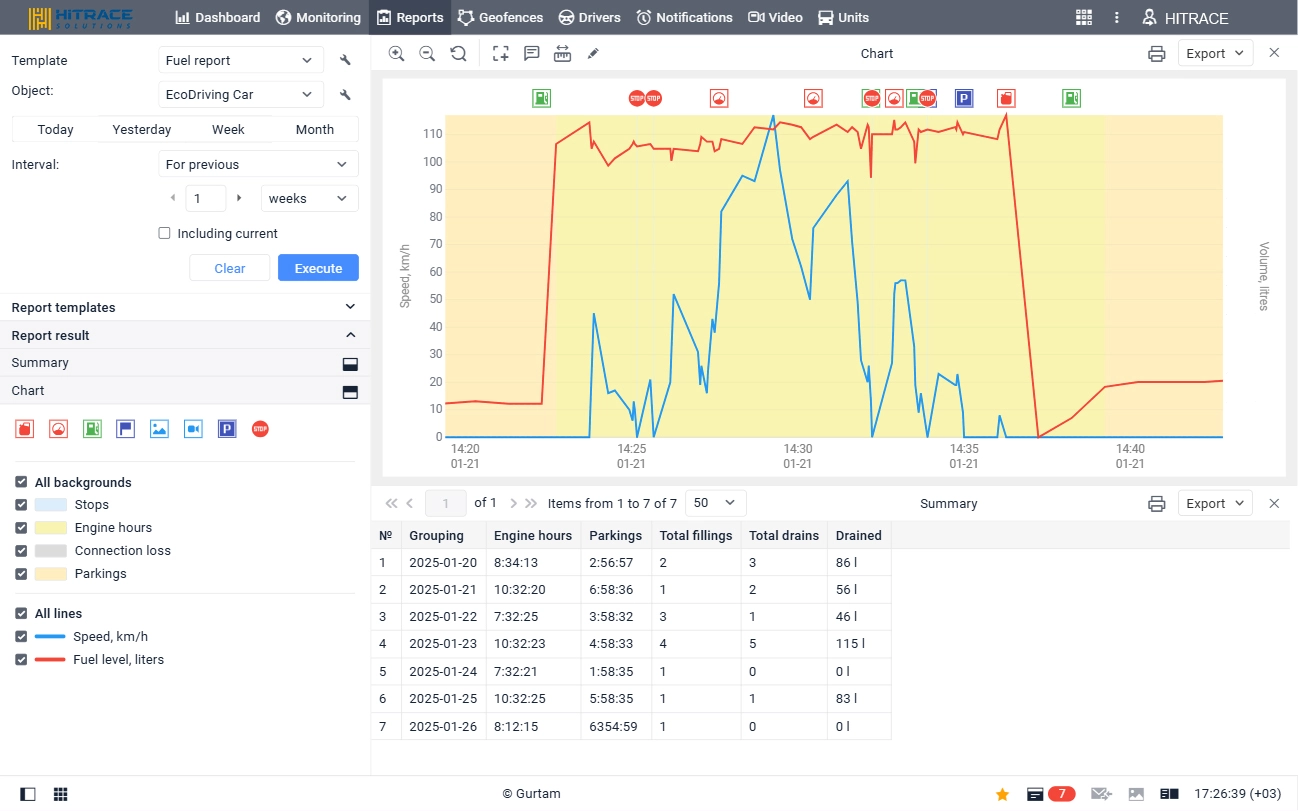
Clients are informed about fuel levels, refuels, and drains through emails, SMS, push notifications, the dashboard, and various other channels. Additionally, they can check the vehicle’s current fuel level in the unit tooltip.
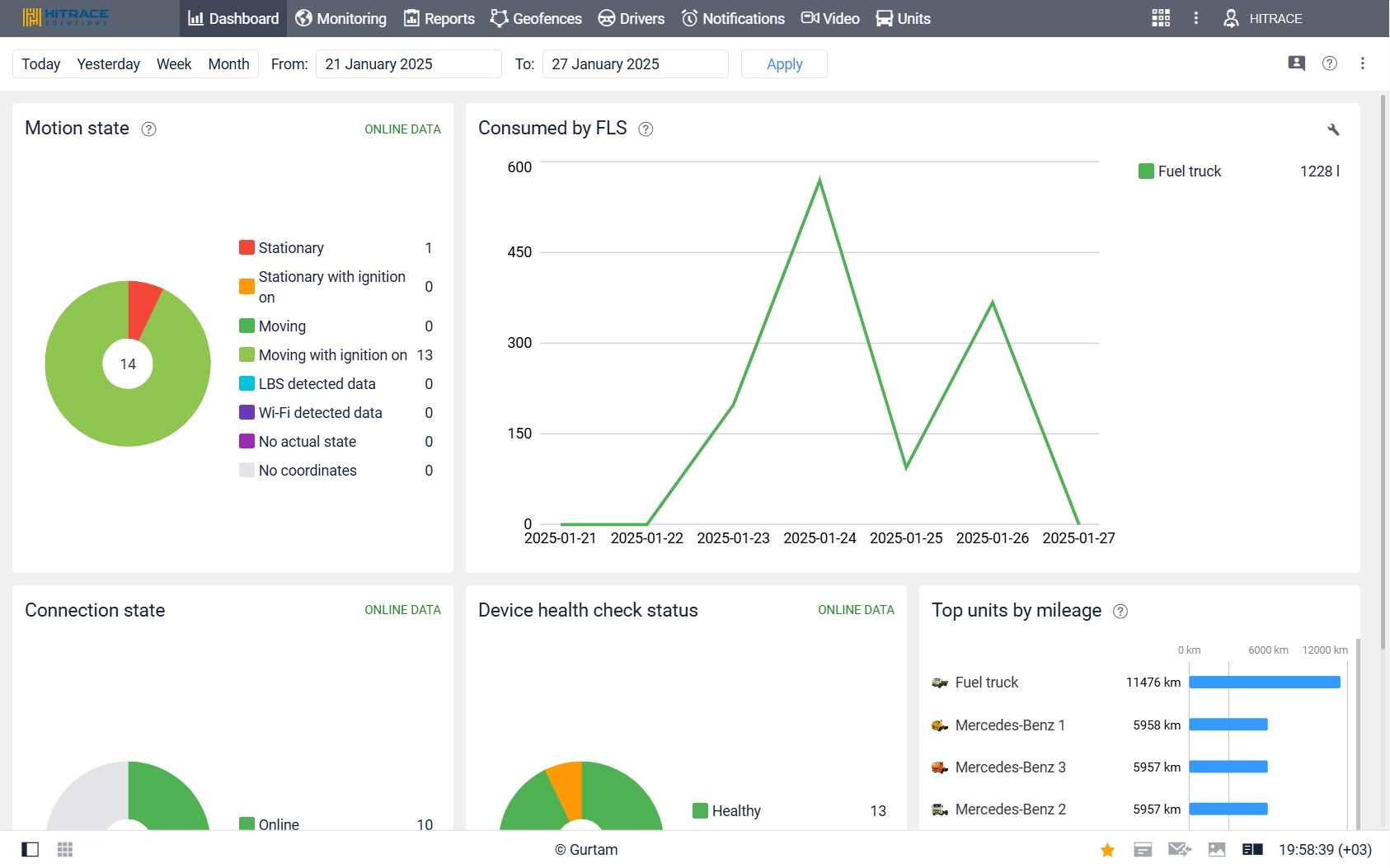
Fleet owners have the ability to tailor and create reports and graphs for a comprehensive overview of their fuel resources. Fuel management software enables business owners to track the usage of every liter.
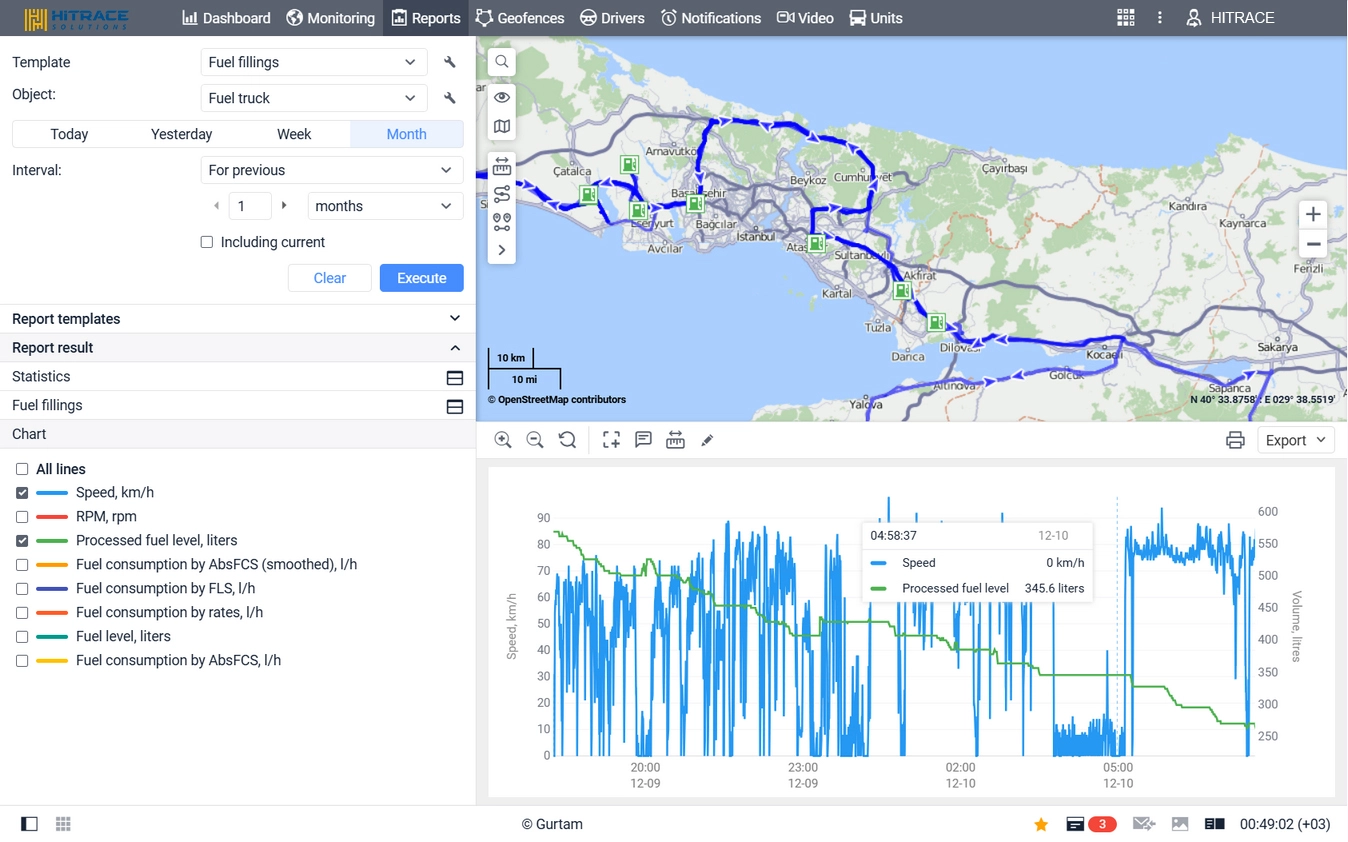
Various methods for calculating fuel consumption are available, utilizing FLS and other sensor data, mathematical formulas, CAN bus information, and additional sources.
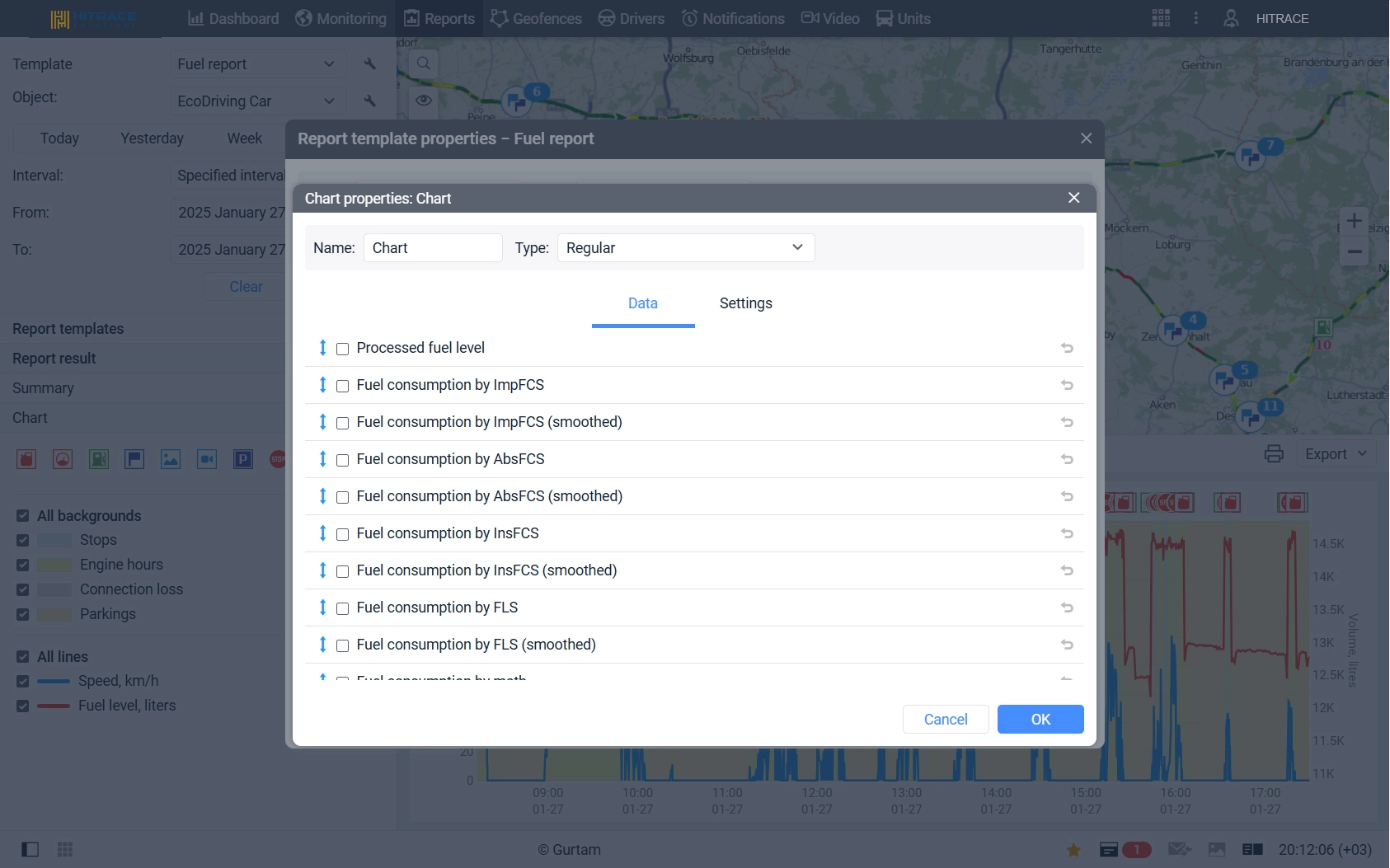
Fuel Monitoring System Components

Fuel level sensor
Monitors the fuel level and its fluctuations in the tank. It interfaces with the GPS tracking device through a digital output. This is currently the most efficient method for tracking fuel consumption.
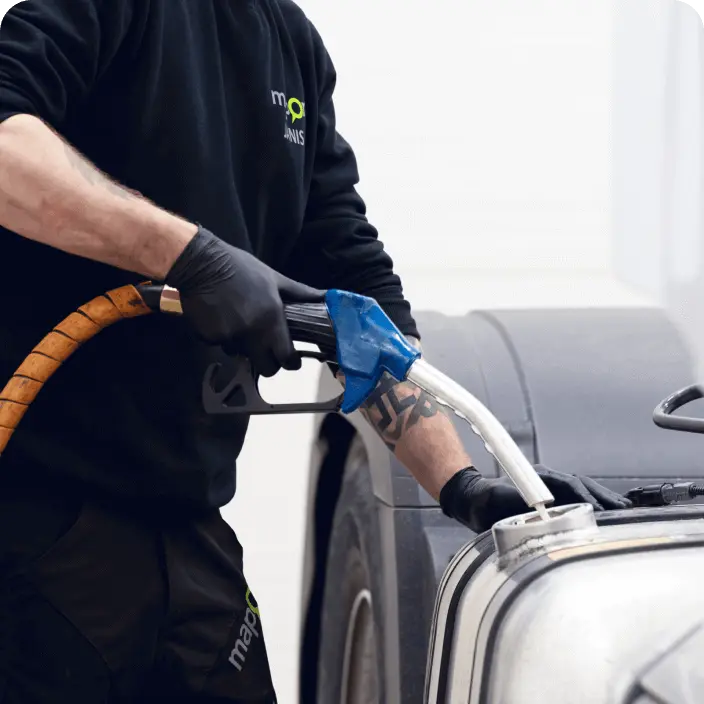
Fuel consumption sensor
Monitors the amount of fuel flowing through a vehicle's fuel line. The live data is sent directly to the GPS tracking device. This is widely used in rail, air, and maritime transportation.
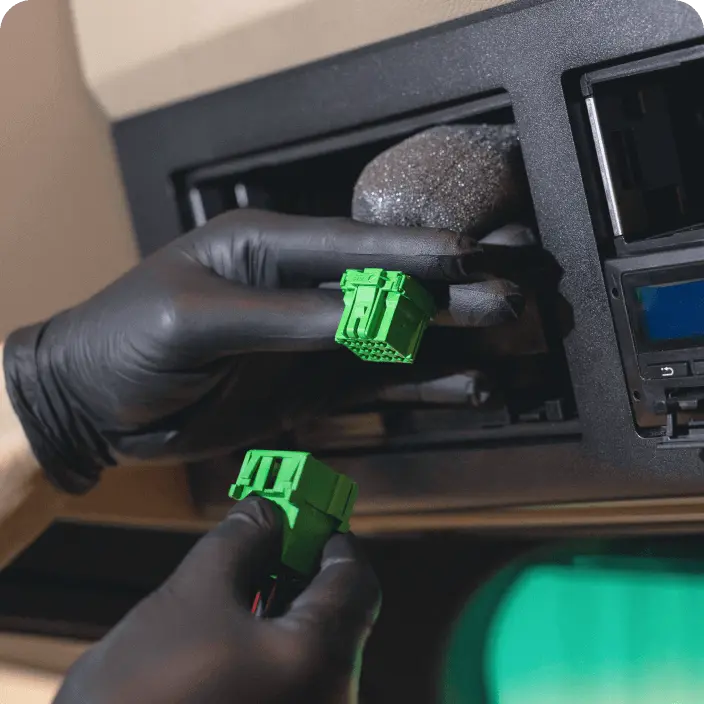
CAN bus
Transmits live fuel level information from the vehicle's onboard computer to the satellite monitoring system. Simple to install and maintain.
Interested in exploring fuel management in detail?
Our specialists have created comprehensive guides on fuel monitoring and management to demonstrate how our fuel solutions operate and why integrating fuel tracking into your fleet is crucial.
